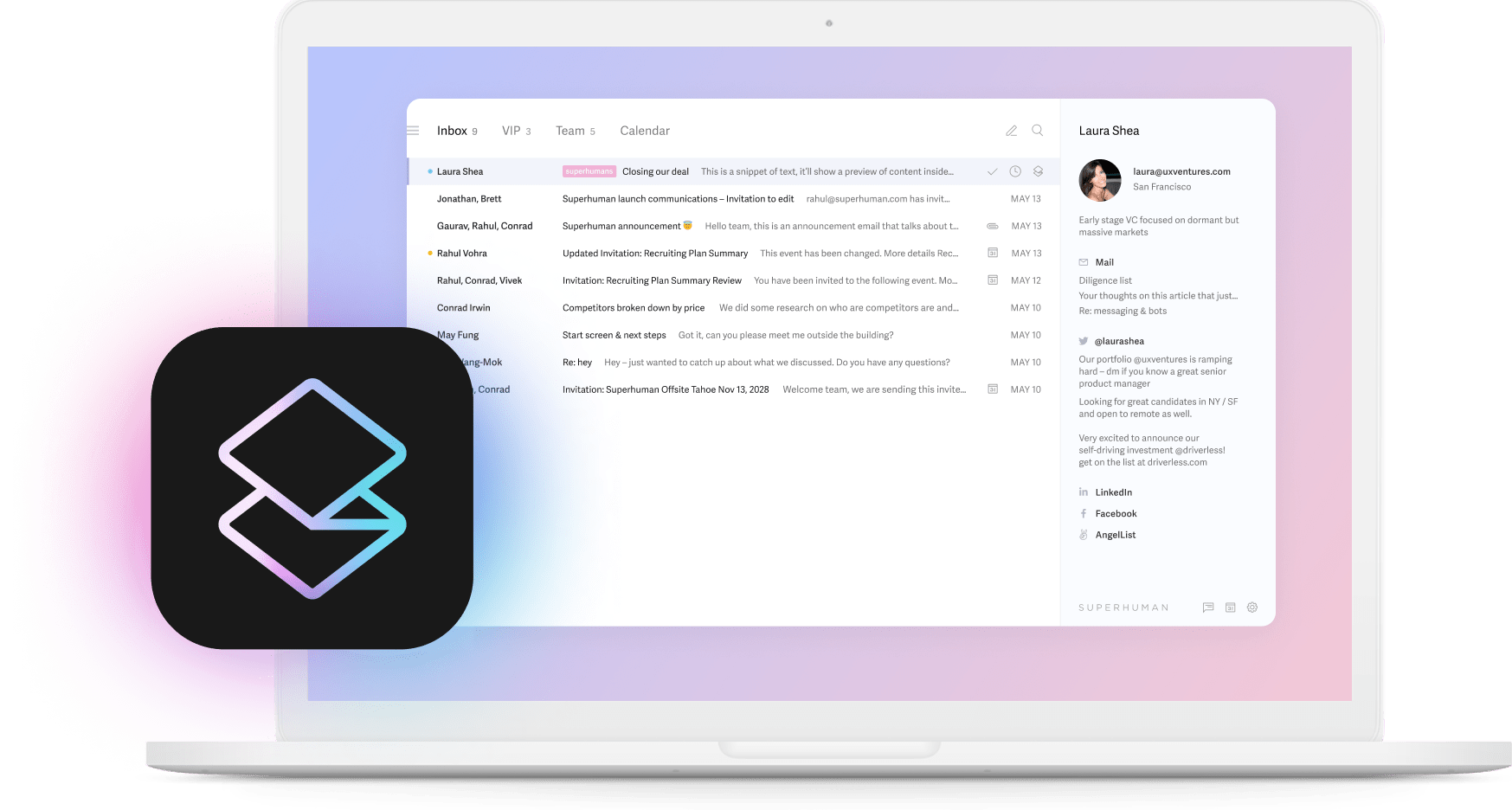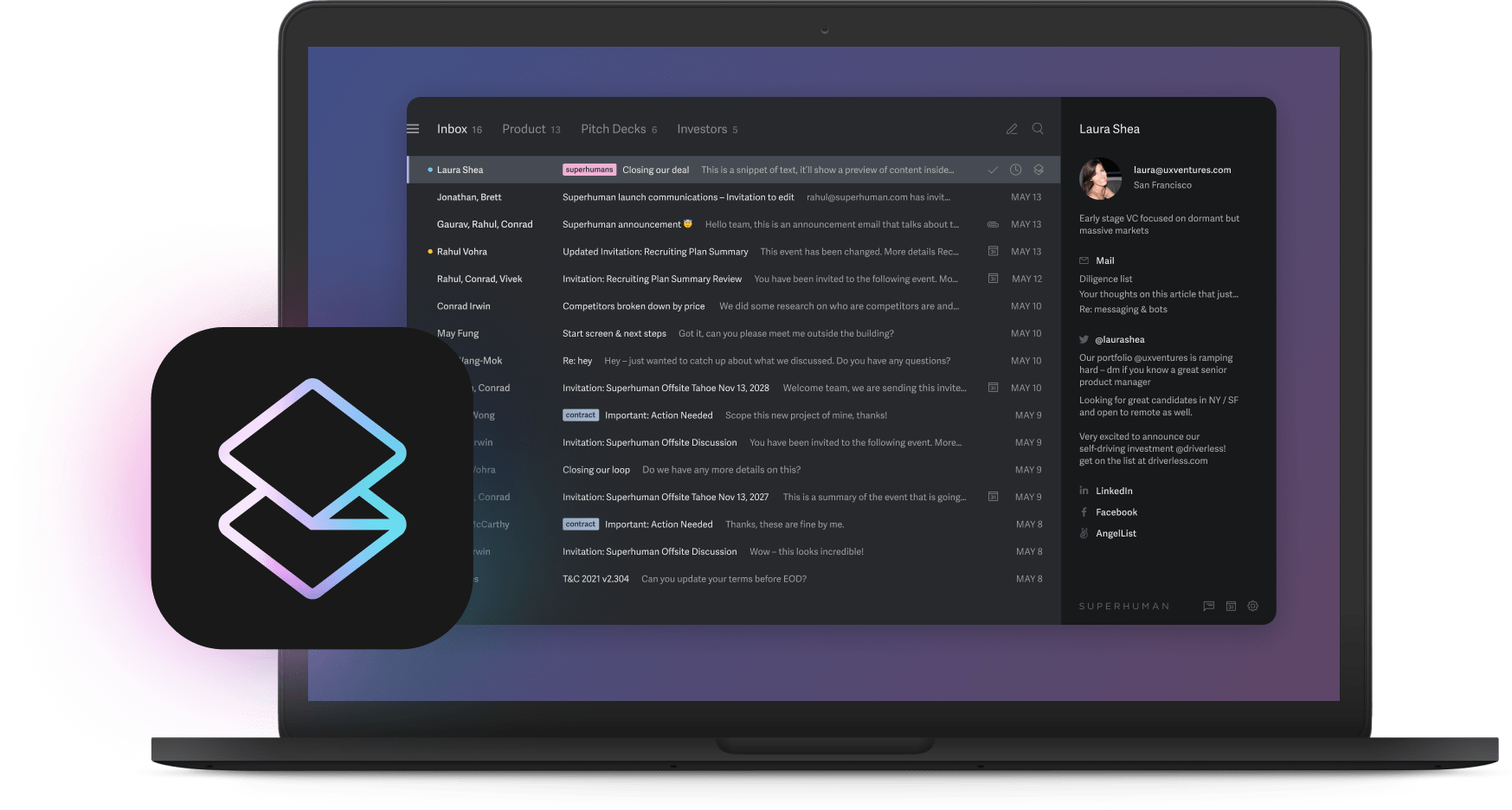
376 billion emails fly across the internet every day. If you're like most people, 121 of them land in your inbox. All those emails destroy your focus. They steal time from real work. And they keep your brain buzzing even after you shut down your computer.
Those constant alerts spike your stress hormones and blur the line between work and life. Chronic email overload follows you home, into your evenings and weekends. The cost keeps adding up. You lose creative thinking time. You make slower decisions. You burn out faster.
Whether you run a company, lead a team, or juggle client work, a messy inbox kills your productivity. And here's the crazy part: only 10 percent of what hits your inbox matters for your business.
You dig through a hundred distractions to find the one message you need. Every interruption takes 20 minutes to recover from. Whole days disappear in tiny context switches you never planned for.
This guide gives you that time back. These seven proven tactics teach you how to manage too many emails in your inbox, turning it from an energy drain into something that works for you.
1. Check email at set times only
Checking email all day kills your efficiency and spikes your stress. Time-boxing changes how you handle messages by picking specific windows for checking and replying.
Pick three times during your day to deal with email. Morning, midday, and late afternoon work well for most people. Turn off notifications during other times so you can focus. This stops the constant alerts from overwhelming you and cuts down on context switching. Batching emails cuts stress and mental load while boosting productivity.
Use your calendar to block out these times and stick to them like you would a meeting. During these slots, focus only on email without distractions. This makes your interactions more intentional and efficient. When you limit email to specific periods, you protect your attention and create room for deep, focused work.
2. Sort messages automatically with filters
Dealing with too many messages requires smart sorting through filters and labels. Set up key categories like VIP contacts, tools and alerts, and newsletters or updates. Think of creating lanes on a highway for your inbox, so you can spot priority messages right away.
Create precise filter rules for your platform. In Gmail, send all messages from your most important client straight to a VIP folder so you never miss critical communication. Consider features like Superhuman's Split Inbox, which organizes messages by splitting your inbox into sections that make sense for you.
Keep the system current by reviewing and adjusting filters regularly to match changing priorities. This ongoing maintenance keeps the system working while freeing up mental energy for tasks that need your attention.
3. Turn off the noise
Constant alerts create distraction cycles that knock you off focus for over 20 minutes. This endless stream of notifications hurts both your mental health and productivity.
Turn off desktop pop-ups, which constantly interrupt you. On your phone, disable sound alerts and app badges to reduce temptation. Don't forget about smartwatches, which buzz and make notifications particularly hard to ignore.
Make exceptions for essential communication. Set up your devices so VIP contacts can reach you when needed. This way, you keep peace of mind without missing critical updates while filtering out the noise. Schedule specific check times or use tools that bundle alerts into chunks you can handle at predetermined times.
4. Take breaks and set limits
Checking email nonstop without breaks leads to stress and major performance drops. Long, uninterrupted sessions cause mental fatigue and poor decision-making.
Work in 90-minute blocks before taking breaks. This prevents burnout while giving your mind time to recharge, leading to better quality decisions. Short, deliberate pauses between sessions improve your workflow dramatically by giving your brain the recovery time it needs.
Set daily limits on total email time and use timers to remind yourself when to step away. Fill these breaks with activities like stretching, walking, or quick mindfulness exercises that get you away from the screen and refresh your mental energy. Watch for warning signs like fatigue or fading attention that tell you when to step back.
5. Unsubscribe and auto-archive aggressively
With only 10% of messages being business-critical, cutting through the noise becomes essential for staying focused and productive.
Batch-unsubscribe using tools like Unroll.me to quickly remove yourself from newsletters and promotions you don't need. This drastically reduces clutter and lets you focus on communication that moves your day forward.
Set up Superhuman auto archive for routine communication. This way, you can configure your inbox so non-urgent but necessary messages, like regular updates, get archived automatically.
This keeps them stored and out of sight, freeing your immediate attention for pressing issues while VIP senders still land directly in your main inbox. Define clear rules for what deserves inbox space. Ask yourself: Do I need this information right now? Can it wait? Use these questions to decide whether to unsubscribe, filter, or prioritize.
6. Write templates for common replies
Creating reusable templates cuts down dramatically on time spent writing common messages like meeting scheduling, answering frequently asked questions, making introductions, and giving status updates.
Look at the messages you send most often and see which ones could benefit from templates. Write templates for meeting scheduling that let you plug in details without typing everything from scratch each time. Sharing templates with your team streamlines workflow while keeping a consistent voice across all communication.
Consider using Superhuman, which lets you use snippets for quick replies. These shorter, reusable text chunks cover greetings, signoffs, and phrases you use all the time.
Keep it personal while speeding up your process. Nobody wants to feel like they're getting a robot response. Take a moment to customize each template with a simple personal note or tweak it for the specific recipient, so your communication stays both efficient and authentic.
7. Set up a weekly maintenance routine
Spending 15 minutes each week maintaining your email system prevents it from falling back into chaos. This small investment keeps all your other tactics working effectively.
Empty your trash folder to free up space and keep your system clean. Review and adjust your filters to make sure they're still sorting messages the way you want them to. Work through any backlog that might have built up, so nothing important gets lost and you don't feel overwhelmed by unprocessed messages.
Update your templates during this time to keep your responses current and efficient. Look at patterns in your communication to spot areas that need improvement, like adjusting your filtering system or dealing with issues that keep coming up. Some people find weekly sessions work perfectly, while others dealing with higher email volumes might need to do this more often. Whatever frequency works for you, keep a checklist so you don't miss anything important.
Start saving time today
Email management changes from an overwhelming burden to a working system when you implement these proven tactics systematically. Combining smart scheduling, automatic sorting, and workflow improvements creates change that builds on itself over time.
Pick two tactics today and put them into practice this week. Watch how quickly email management goes from a time-wasting task to an efficient part of your workflow, giving you more time to focus on what really matters.
Curious what productivity experts Efficient App think of Superhuman? Read their Superhuman Review to hear what they love about us.






